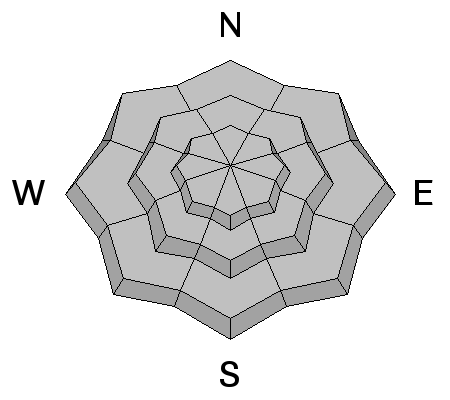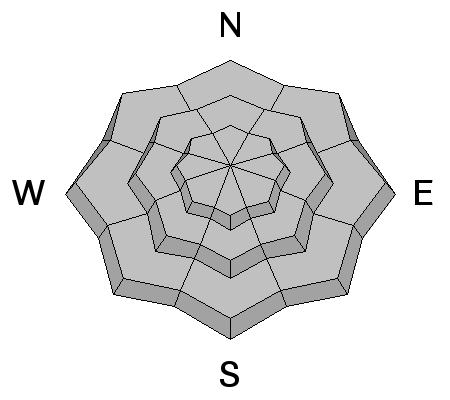Forecast for the Salt Lake Area Mountains

Sunday morning, April 16, 2017

We have stopped issuing avalanche advisories for the 2016/2017 season. For the rest of the month we will issue Friday updates for the central Wasatch Mountains and updates any time there is measurable snowfall; however, we have discontinued issuing avalanche danger ratings all together.
Remember after each ski resort closes for the season they no longer perform avalanche mitigation with explosives, so treat it just like backcountry terrain. It's hard to get your head wrapped around the fact that a slope that has moguls all winter can be dangerous avalanche terrain when the resorts are closed.
Watch the video below about things to watch for this spring.
We will, continue to post your observations each day until then end of April, so if you're getting out, you can let everyone in our community know what you find and we will do the same.
This does not mean the end of avalanches. Spring storms and warm temperatures may make avalanche danger rise. If you scroll down, we provide some general avalanche advice to follow for typical spring weather patterns and we provide a series of other links you can use for current conditions and mountain weather.
First, we have a long list of people to thank:
Be sure to mark your calendars - join us for the Black Diamond Fall Fundraiser Party on Thursday, September 14 and the Utah Snow and Avalanche Workshop at Snowbird Saturday, Nov 4.
Weather stations and wind sites click HERE.
Weather forecast and discussion click HERE.
NOAA snow and avalanche page click HERE.
Although we will be shutting down regular operations, we will continue to post recent avalanche activity and observations through the end of April, so please do continue to send them to us. You can check the latest observations here. We also follow avalanche-related activity on Instagram - be sure to tag your photos with #utavy .

When cold, dry snow becomes wet for the first time, it almost always means wet sluffs (loose snow that fans outward as it descends) and occasional wet slabs. Also, slabs can involve old snow when melt water percolates through a layered, winter snowpack for the first time especially after 3 days of strong melting combined with no refreeze at night. Luckily, wet avalanches usually don't last forever because after a few days of percolating melt water, all the layers in the snow disappear and the snow becomes homogenous and dense, turning into a stable summer-like snowpack. Typically, this cycle of instability maturing into stability occurs first on the south facing slopes in early spring, then progresses to the east and west facing slopes in mid spring and finally by late spring, the upper elevation north facing slopes go through a wet avalanche cycle. Finally, glide avalanches occur regularly in spring as the entire snowpack slides slowly on the ground like a glacier until they suddenly release into a full-depth avalanche. These occur regularly on steep rock slabs and occasionally on steep grassy slopes. Notorious glide avalanche locations include places Stairs Gulch or the rock slabs in Broads Fork, which you should always avoid in spring. Avoid crossing under any slopes with telltale glide cracks in the snowpack. Remember they come down randomly, even at night.
The bottom line for wet avalanches:
Get out early and get home early. Get off of--and out from underneath--any slope approaching 35 degrees or steeper when the snow becomes wet enough to not support your weight. Warning signs may include:
Any of these signs mean it's time to head home, or at least change to an aspect with cooler snow. Remember, even "smaller" slides can be dangerous in high-consequence terrain, such as above a terrain trap, trees, rocks, cliffs or a long, large avalanche path. Plan your trip to have a safe exit back to the car. (You can always click on the "I" button next to the avalanche problem icon for more information.)

We almost always get several winter-like snow storms in April and May. Treat each storm just like you would in winter. Avalanches can occur within the new snow typically from 1) low density layers deposited during the storm, 2) high precipitation intensity during a storm and 3) from wind slabs created during the storm.
It's easy to test the new snow as you travel by jumping on small test slopes to see if they avalanche or just dig down with your hand to see how well the new snow is bonding. Snow can change dramatically in both space and time so never let your guard down. Especially avoid any steep slope with recent wind deposits, which are almost always dangerous.
Practice usual backcountry protocol, go one at a time, never travel above other people and practice all the usual risk reduction measures and low-risk travel ritual you learn in avalanche classes.
|
Remember your information can save lives. If you see anything we should know about, please help us out by submitting snow and avalanche conditions. You can also call us at 801-524-5304, email by clicking HERE, or include #utavy in your tweet or Instagram. To get help in an emergency (to request a rescue) in the Wasatch, call 911. Be prepared to give your GPS coordinates or the run name. Dispatchers have a copy of the Wasatch Backcountry Ski map. Backcountry Emergencies. It outlines your step-by-step method in the event of a winter backcountry incident. If you trigger an avalanche in the backcountry, but no one is hurt and you do not need assistance, please notify the nearest ski area dispatch to avoid a needless response by rescue teams. Thanks.
EMAIL ADVISORY If you would like to get the daily advisory by email you will need to subscribe here. DAWN PATROL Hotline updated daily by 5-530am - 888-999-4019 option 8. TWITTER Updates for your mobile phone - DETAILS UDOT canyon closures: LINK TO UDOT, or on Twitter, follow @UDOTavy, @CanyonAlerts or @AltaCentral Utah Avalanche Center mobile app - Get your advisory on your iPhone along with great navigation and rescue tools. Powderbird Helicopter Skiing - Blog/itinerary for the day Lost or Found something in the backcountry? - http://nolofo.com/ To those skinning uphill at resorts: it is critical to know the resort policy on uphill travel. You can see the uphill travel policy for each resort here. Benefit the Utah Avalanche Center when you shop from Backcountry.com or REI: Click this link for Backcountry.com or this link to REI, shop, and they will donate a percent of your purchase price to the UAC. Both offer free shipping (with some conditions) so this costs you nothing! Benefit the Utah Avalanche Center when you buy or sell on ebay - set the Utah Avalanche Center as a favorite non-profit in your ebay account here and click on ebay gives when you buy or sell. You can choose to have your seller fees donated to the UAC, which doesn't cost you a penny. This information does not apply to developed ski areas or highways where avalanche control is normally done. This advisory is from the U.S.D.A. Forest Service, which is solely responsible for its content. This advisory describes general avalanche conditions and local variations always occur |